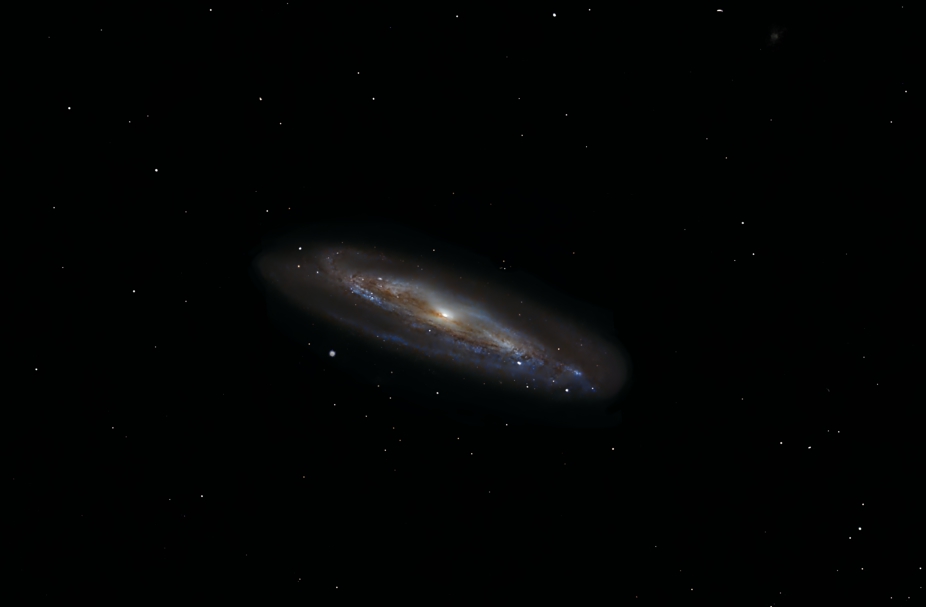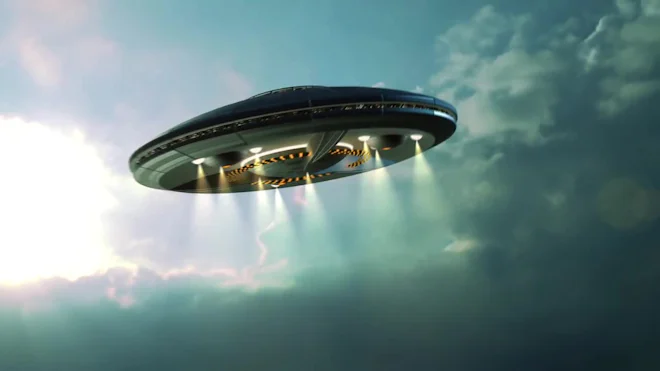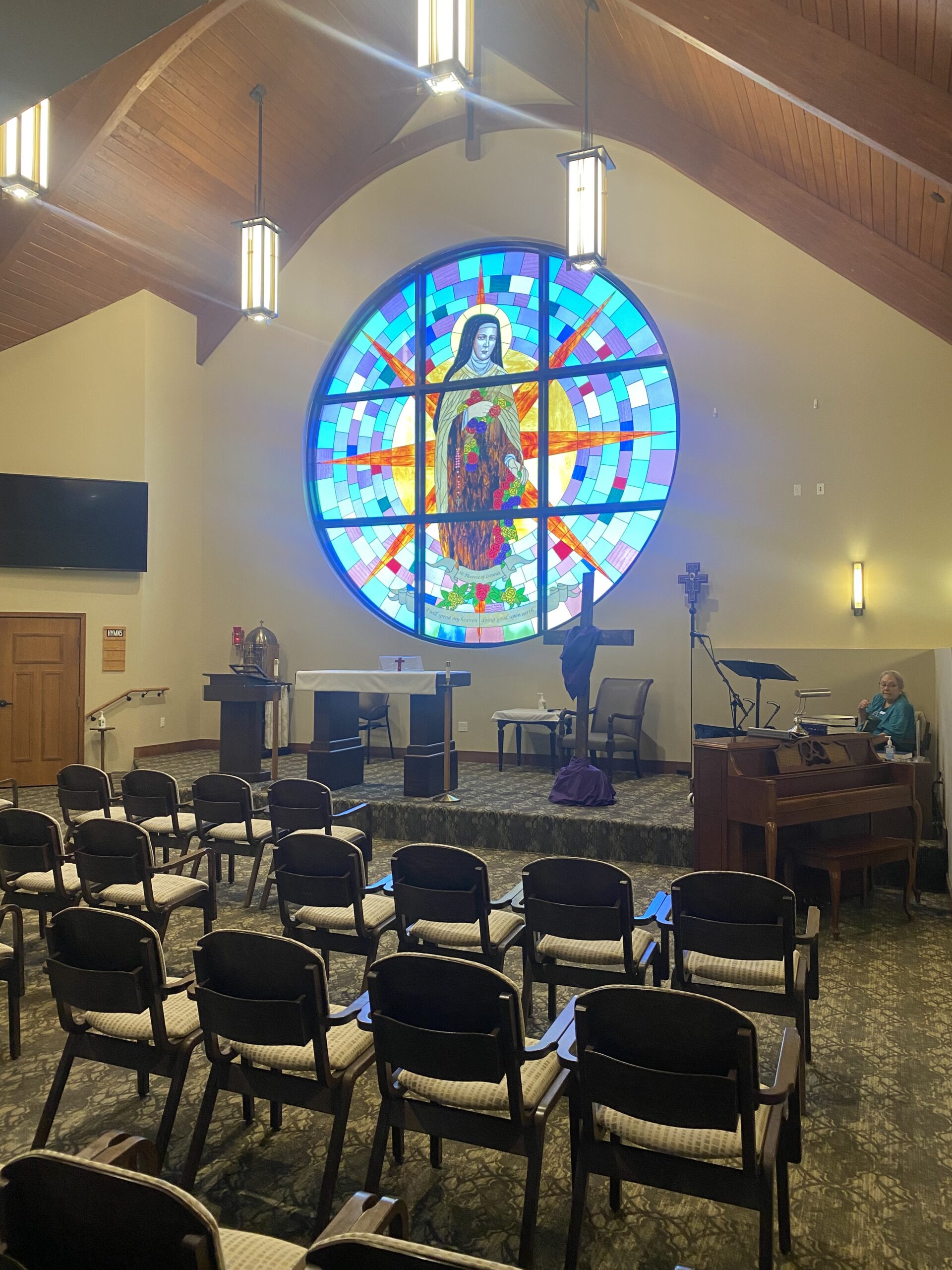Blog
James Harrell McGriff (April 3, 1936 – May 24, 2008) was an American hard bop and soul-jazz organistand organ trio bandleader.
Born in Germantown, Philadelphia, Pennsylvania, McGriff started playing piano at the age of five and by his teens had also learned to play vibes, alto sax, drums and upright bass. He played bass in his first group, a piano trio. When he joined the United States Army, McGriff served as a military policeman during the Korean War. He later became a police officer in Philadelphia for two years.
Music kept drawing McGriff’s attention away from the police force. His childhood friend, organist Jimmy Smith, had begun earning a substantial reputation in jazz for his Blue Note albums (the two played together once in 1967) and McGriff became entranced by the organ sound while Richard “Groove” Holmes played at his sister’s wedding. Holmes went on to become McGriff’s teacher and friend and they recorded together on two occasions in 1973 for two Groove Merchant records.
McGriff bought his first Hammond B-3 organ in 1956, spent six months learning the instrument, then studied at New York’s Juilliard School. He also studied privately with Milt Buckner, Jimmy Smith, and Sonny Gatewood. He was influenced by the energy and dynamics of organist Buckner and the diplomatic aplomb of Count Basie, and by local organists such as Howard “The Demon” Whaley and Austin Mitchell.
more...Rocco Scott LaFaro (April 3, 1936 – July 6, 1961) was an American jazz double bassist known for his work with the Bill Evans Trio. LaFaro broke new ground on the instrument, developing a countermelodic style of accompaniment rather than playing traditional walking basslines, as well as virtuosity that was practically unmatched by any of his contemporaries. Despite his short career, he remains one of the most influential jazz bassists, and was ranked number 16 on Bass Player magazine’s top 100 bass players of all time.
Lafaro was born in Newark, New Jersey, the son of a big band musician. LaFaro was five when his family moved to Geneva, New York. He started playing piano in elementary school, bass clarinet in middle school, and tenor saxophone when he entered high school. He took up double bass at 18 before entering college because learning a string instrument was required of music education majors. After three months at Ithaca College, he concentrated on bass. He played in groups at the College Spa and Joe’s Restaurant on State Street in downtown Ithaca.
LaFaro died in an automobile accident on July 6, 1961, in Seneca, New York, on U.S. Route 20 between Geneva and Canandaigua, four days after accompanying Stan Getz at the Newport Jazz Festival. According to Paul Motian, the death of LaFaro left Bill Evans “numb with grief”, “in a state of shock”, and “like a ghost”. Obsessively he played “I Loves You Porgy“, a tune that had become synonymous with him and LaFaro. Evans stopped performing for several months.
more...Homesick James (April 30, 1910 – December 13, 2006) was an American blues musician known for his mastery of the slide guitar. He worked with his cousin, Elmore James, and with Sonny Boy Williamson II.
Homesick James was born in Somerville, Tennessee, United States, the son of Cordellia Henderson and Plez Williamson Rivers, who were both musicians. The year of his birth is uncertain. He stated that he was born in 1905, 1910, or 1914, while his union records give 1924. His actual birth name has given as James Williamson or John Henderson.
Little is known about his early life. He developed a self-taught style of slide guitar through playing at local dances in his teens. He claimed to have played with Yank Rachell, Sleepy John Estes, Blind Boy Fuller, Sonny Boy Williamson II and Big Joe Williams, among others, and to have been acquainted with Robert Johnson. He also claimed to be the older cousin of Elmore James, to have bought James his first guitar, and to have taught him how to play slide. However, some of these claims are unconfirmed.
more...James Wesley “Bubber” Miley (April 3, 1903 – May 20, 1932) was an American early jazz trumpet and cornet player, specializing in the use of the plunger mute.
Miley was born in Aiken, South Carolina, United States, into a musical family. At the age of six, he and his family moved to New York City where, as a child, he occasionally sang for money on the streets, and later, at the age of 14, studied to play the trombone and cornet.
In 1920, after having served in the Navy for 18 months, he joined a jazz formation named the Carolina Five, and remained a member for the next three years, playing small clubs and boat rides all around New York City. After leaving the band at the age of 19, Miley briefly toured the Southern States with a show titled The Sunny South, and then joined Mamie Smith‘s Jazz Hounds, replacing trumpeter Johnny Dunn. They regularly performed in clubs around New York City and Chicago. While touring in Chicago, he heard King Oliver‘s Creole Jazz Band playing and was captivated by Oliver’s use of mutes. Soon Miley found his own voice by combining the straight and plunger mute with a growling sound. Miley’s alcoholism terminally affected his life. On May 20, 1932, at the age of 29, he died of tuberculosis, on Welfare Island, now Roosevelt Island, in New York City. Miley lived just a little longer than his contemporary, jazz cornetist Bix Beiderbecke, whose life was also cut short due to alcohol abuse.
more...Messier 98, M98 or NGC 4192, is an intermediate spiral galaxy about 44.4 million light-years away in slightly northerly Coma Berenices, about 6° to the east of the bright star Denebola (Beta Leonis). It was discovered by French astronomer Pierre Méchain on 1781, along with nearby M99 and M100, and was catalogued by compatriot Charles Messier 29 days later in his Catalogue des Nébuleuses & des amas d’Étoiles. It has a blueshift, denoting ignoring of its fast other movement (vectors of proper motion), it is approaching at about 140 km/s.

Emmylou Harris (born April 2, 1947) is an American singer, songwriter, musician, bandleader, and activist. A highly regarded figure in contemporary music, she is known for having a consistent artistic direction. Harris is considered one of the leading music artists behind the country rock genre in the 1970s and the Americana genre in the 1990s. Her music united both country and rock audiences in live performance settings. Her characteristic voice, musical style and songwriting have been acclaimed by critics and fellow recording artists.
Harris developed an interest in folk music in her early years which led to her performing professionally. Moving to New York City in the 1960s, she recorded a folk album and performed regionally. She was discovered by Gram Parsons, who influenced her country rock direction. Following his 1973 death, Harris obtained her own recording contract from Reprise–Warner Bros. Her second album, Pieces of the Sky(1975), found both critical acclaim and commercial success. Follow-up 1970s albums further elevated Harris’ career such as Elite Hotel (1976), Quarter Moon in a Ten Cent Town (1978) and Blue Kentucky Girl(1979). By 1980, she had acquired four number one songs on the US and Canadian country charts: “Together Again“, “Sweet Dreams“, “Two More Bottles of Wine” and “Beneath Still Waters“.
Harris had a continued string of commercially and critically successful albums like Roses in the Snow(1980), Evangeline (1981) and Last Date (1982). Her backing group The Hot Band helped establish a musical foundation for her concerts and albums. Her 1980s albums spawned the top ten singles “Wayfaring Stranger“, “Born to Run” and “Last Date“. The 1985 album The Ballad of Sally Rose was among Harris’ first self-written projects. The album (along with its follow-ups) failed to sustain the commercial momentum of previous albums. Harris then collaborated with Dolly Parton and Linda Ronstadt on Trio (1987). The platinum-selling album was also a critical success that spawned four top ten singles.
In 1992, Warner Bros. released the live album At the Ryman. It garnered critical praise and renewed interest in its live venue, the Ryman Auditorium. Harris was inspired to move in a new musical direction with 1995’s Wrecking Ball. She then reunited with Dolly Parton and Linda Ronstadt for Trio II (1999). By the 2000s, Harris had signed with Nonesuch Records and recorded several albums of self-composed material like Red Dirt Girl (2000), All I Intended to Be (2008) and Hard Bargain (2011). She also found collaborative partnerships, such as with Mark Knopfler on the internationally successful All the Roadrunning (2006). She then collaborated with Rodney Crowell on the critically acclaimed Old Yellow Moon (2013) and The Traveling Kind (2015). She also became involved in activism during this time, including starting her own dog rescue called Bonaparte’s Retreat.
Harris has been estimated to have sold over 15 million records worldwide. She has also earned 13 Grammy Awards, placed 27 singles into the top ten of the US country chart, and several of her albums have received gold certifications in the US. She was inducted into the Country Music Hall of Fame in 2008 and was ranked among Rolling Stone‘s list of the 200 Greatest Singers of All Time in 2022.
more...Marvin Pentz Gaye Jr. (April 2, 1939 – April 1, 1984) was an American singer and songwriter. He helped shape the sound of Motown in the 1960s, first as an in-house session player and later as a solo artist with a string of successes, which earned him the nicknames “Prince of Motown” and “Prince of Soul”.
Gaye’s Motown songs include “Ain’t That Peculiar“, “How Sweet It Is (To Be Loved by You)“, and “I Heard It Through the Grapevine“. He also recorded duets with Mary Wells, Kim Weston, Tammi Terrell, and Diana Ross. During the 1970s, Gaye recorded the albums What’s Going On (1971) and Let’s Get It On (1973) and became one of the first artists in Motown to break away from the reins of a production company.
His later recordings influenced several R&B subgenres, such as quiet storm and neo soul. “Sexual Healing“, released in 1982 on the album Midnight Love, won him his first two Grammy Awards. Gaye’s last televised appearances were at the 1983 NBA All-Star Game, where he sang “The Star-Spangled Banner“; and on Motown 25: Yesterday, Today, Forever; and Soul Train.
On April 1, 1984, on the day before his 45th birthday, Gaye was shot and killed by his father, Marvin Gay Sr., at their house in Western Heights, Los Angeles, after an argument. Gay Sr. later pleaded no contest to voluntary manslaughter, and received a six-year suspended sentence and five years of probation. Many institutions have posthumously bestowed Gaye with awards and other honors including the Grammy Lifetime Achievement Award, and inductions into the Rhythm and Blues Music Hall of Fame, the Songwriters Hall of Fame, and the Rock and Roll Hall of Fame.
more...Larry Coryell (born Lorenz Albert Van DeLinder III; April 2, 1943 – February 19, 2017) was an American jazz guitarist.
Larry Coryell was born in Galveston, Texas, United States. He never knew his biological father, a musician. He was raised by his stepfather Gene, a chemical engineer, and his mother Cora, who encouraged him to learn piano when he was four years old.
In his teens, he switched to guitar. After his family moved to Richland, Washington, he took lessons from a teacher who lent him albums by Les Paul, Johnny Smith, Barney Kessel, and Tal Farlow. When asked what jazz guitar albums influenced him, Coryell cited On View at the Five Spot Cafe by Kenny Burrell, Red Norvo with Strings, and The Incredible Jazz Guitar of Wes Montgomery. He liked blues and pop music and tried to play jazz when he was eighteen. He said that hearing Wes Montgomery changed his life.
Coryell graduated from Richland High School, where he played in local bands the Jailers, the Rumblers, the Royals, and the Flames. He also played with the Checkers from Yakima. He then moved to Seattle to attend the University of Washington.
more...
Leon Russell (born Claude Russell Bridges; April 2, 1942 – November 13, 2016 Lawton, OK) was an American musician and songwriter who was involved with numerous bestselling records during his 60-year career that spanned multiple genres, including rock and roll, country, gospel, bluegrass, rhythm and blues, southern rock, blues rock, folk, surf and the Tulsa sound. His recordings earned six gold records and he received two Grammy Awards from seven nominations. In 2011, he was inducted into both the Rock and Roll Hall of Fame and the Songwriters Hall of Fame.
Russell collaborated with many notable artists and recorded at least 31 albums and 430 songs. He wrote “Delta Lady”, recorded by Joe Cocker, and organized and performed with Cocker’s Mad Dogs & Englishmen tour in 1970. His “A Song for You“, which was named to the Grammy Hall of Fame in 2018, has been recorded by more than 200 artists, and his song “This Masquerade” by more than 75.
As a pianist, Russell played in his early years on albums by the Beach Boys, Dick Dale, and Jan and Dean. On his first album, Leon Russell, in 1970, the musicians included Eric Clapton, Ringo Starr, and George Harrison. One of his early fans, Elton John, said that Russell was a “mentor” and an “inspiration”. They recorded their album The Union in 2010, earning them a Grammy nomination.
Russell produced and played in recording sessions for Bob Dylan, Frank Sinatra, Ike & Tina Turner, the Rolling Stones, and many other artists. He wrote and recorded the hits “Tight Rope” and “Lady Blue“. He performed at The Concert for Bangladesh in 1971, along with Harrison, Dylan, and Clapton; for this he earned a Grammy Award.
more...Booker Little Jr. (April 2, 1938 – October 5, 1961) was an American jazz trumpeter and composer. He appeared on many recordings in his short career, both as a sideman and as a leader. Little performed with Max Roach, John Coltrane, and Eric Dolphy and was strongly influenced by Sonny Rollins and Clifford Brown. He died aged 23.
Booker Little Jr. was born in Memphis, Tennessee to Booker, a Pullman porter who was a trombonist, and his wife Ophelia Little, who was a church organist. He also was the brother of Helena, Vivian, and Vera Little (Vera later sung with the London Opera Company). From such a musically inclined family, Little naturally gravitated towards music at a young age. His first instrument was trombone (like his father), but he switched to clarinet at the age of 12. At 14, his band director urged him to switch to trumpet, and he settled on the instrument quickly. In 1952, Little started attending Manassas High School where he continued his development on trumpet and later graduated. Being in Memphis, Little was able to further develop his talent with contemporaries such as Phineas Newborn Jr., George Coleman, Frank Strozier, and his cousin Louis Smith. He was performing with Newborn on a casual basis by his mid-teens.
After graduating, he moved to Chicago, Illinois to continue his studies at the Chicago Conservatory in 1954. At the conservatory, he continued to study trumpet but also incorporated studies in composition, theory, and orchestration with a minor in piano. He would later on graduate with a bachelor’s degree in his main instrument. As a sophomore, Little met Sonny Rollins. For about nine months, they both stayed at the YMCA where Rollins would influence Little greatly by encouraging him to find his own sound versus mimicking other musicians
more...



This image features Arp 72, a very selective galaxy group that only includes two interacting galaxies: NGC 5996 (the large spiral galaxy) and NGC 5994 (its smaller companion, in the lower left of the image). Both galaxies lie approximately 160 million light-years from Earth, and their cores are separated from each other by a distance of around 67 thousand light-years. Moreover, the distance between the galaxies at their closest points is even smaller, closer to 40 thousand light-years. Whilst this might still sound vast, in galactic separation terms it is really very cosy! For comparison, the distance between the Milky Way and its nearest independent galactic neighbour Andromeda is around 2.5 million light-years. Alternatively, the distance between the Milky Way and its largest and brightest satellite galaxy, the Large Magellanic Cloud (satellite galaxies are galaxies that are bound in orbit around another galaxy), is about 162 thousand light-years.
Given this, coupled with the fact that NGC 5996 is roughly comparable in size to the Milky Way, it is not surprising that NGC 5996 and NGC 5994 — apparently separated by only 40 thousand light-years or so — are interacting with one another. In fact, the interaction might be what has caused the spiral shape of NGC 5996 to distort and apparently be drawn in the direction of NGC 5994. It also prompted the formation of the very long and faint tail of stars and gas curving away from NGC 5996, up to the top right of the image. This ‘tidal tail’ is a common phenomenon that appears when galaxies get in close together, as can be seen in several Hubble images.
[Image Description: A large spiral galaxy with a smaller neighbouring galaxy. The spiral galaxy is wide and distorted, with colourful dust. Its companion lies close by it at the end of a spiral arm, to the lower left. A long, faint tail of stars reaches up from the right side of the spiral galaxy to the top of the image. Several small, distant galaxies can be seen in the background, as well as one bright star in the foreground.]

Gilbert Scott-Heron (April 1, 1949 – May 27, 2011 Chicago) was an American jazz poet, singer, musician, and author known for his work as a spoken-word performer in the 1970s and 1980s. His collaborative efforts with musician Brian Jackson fused jazz, blues, and soul with lyrics relative to social and political issues of the time, delivered in both rapping and melismatic vocal styles. He referred to himself as a “bluesologist”,his own term for “a scientist who is concerned with the origin of the blues”. His poem “The Revolution Will Not Be Televised“, delivered over a jazz-soul beat, is considered a major influence on hip hop music.
Scott-Heron’s music, most notably on the albums Pieces of a Man and Winter in America during the early 1970s, influenced and foreshadowed later African-American music genres, including hip hop and neo soul. His recording work received much critical acclaim, especially for “The Revolution Will Not Be Televised”.AllMusic‘s John Bush called him “one of the most important progenitors of rap music“, stating that “his aggressive, no-nonsense street poetry inspired a legion of intelligent rappers while his engaging songwriting skills placed him square in the R&B charts later in his career.”
Scott-Heron remained active until his death, and in 2010 released his first new album in 16 years, entitled I’m New Here. A memoir he had been working on for years up to the time of his death, The Last Holiday, was published posthumously in January 2012. Scott-Heron received a posthumous Grammy Lifetime Achievement Award in 2012. He also is included in the exhibits at the National Museum of African American History and Culture (NMAAHC) that officially opened on September 24, 2016, on the National Mall, and in an NMAAHC publication, Dream a World Anew. In 2021, Scott-Heron was posthumously inducted into the Rock and Roll Hall of Fame, as a recipient of the Early Influence Award.
more...Alberta Hunter (April 1, 1895 – October 17, 1984) was an American jazz and blues singer and songwriter from the early 1920s to the late 1950s. After twenty years of working as a nurse, Hunter resumed her singing career in 1977.
Hunter was born in Memphis, Tennessee, to Laura Peterson, who worked as a maid in a Memphis brothel, and Charles Hunter, a Pullman porter. Hunter said she never knew her father. She attended Grant Elementary School, off Auction Street, which she called Auction School, in Memphis. She attended school until around age 15.
Hunter had a difficult childhood. Her father left when she was a child, and to support the family her mother worked as a servant in a brothel in Memphis, although she married again in 1906. Hunter was not happy with her new family and left for Chicago, Illinois, around the age of 11, in the hopes of becoming a paid singer; she had heard that it paid 10 dollars per week. Instead of finding a job as a singer she had to earn money by working at a boardinghouse that paid six dollars a week as well as room and board. Hunter’s mother left Memphis and moved in with her soon afterwards.
more...Harry Howell Carney (April 1, 1910 – October 8, 1974) was a jazz saxophonist and clarinettist who spent over four decades as a member of the Duke Ellington Orchestra. He played a variety of instruments, but primarily used the baritone saxophone, being a critical influence on the instrument in jazz.
Carney was born on April 1, 1910, in Boston, Massachusetts. In Boston, he grew up close to future bandmate Johnny Hodges. Carney began by playing the piano at age seven, moved to the clarinet at 14, and added the alto saxophone a year later. He first played professionally in clubs in Boston. Early influences on Carney’s playing included Buster Bailey, Sidney Bechet, and Don Murray. Carney also reported that, for his baritone saxophone playing, he “tried to make the upper register sound like Coleman Hawkins and the lower register like Adrian Rollini.
more...More Posts
- Jackie Wilson
- Skip James
- Kenny Barron
- Les Paul
- World Music Asmâa Hamzoui & Bnat Timbouktou
- Daily Roots King Tubby
- Alien Conspiracy
- Cosmos Abell 2744
- Derek Trucks
- Tony Rice
- Bill Watrous
- Robert Schumann
- World Music Tito Rinesi & the Dargah Ensemble
- Daily Roots Itals
- Temple Israel Rabbi Moss Celebration
- Cosmos Sh2-308
- Johnny Clegg
- ‘Speedy’ Acquaye
- Tina Brooks
- Tal Farlow